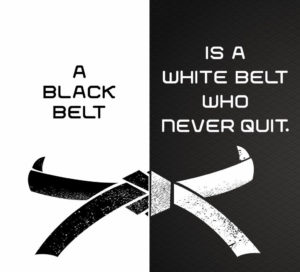In Shōtōkan karate, Kata is a sequence of pre-arranged movements. When performed to it’s maximum ability, the student’s Kata will show precision and attention to form and technique.
The principles of Kata can not only be applied in martial arts, but in many processes that we do in everyday life when learning something new.
For example, when initially learning to drive a car you have to be consciously aware of when to press the brake, when to shift gears or how far the steering wheel needs to be turned to move the car in a particular direction. With repetitive practice however, you can shift into “Auto-Pilot” and co-ordinate all these processes simultaneously while also multi-tasking.
In the same way, Katas are used to help learn and remember fundamental movements and techniques in karate. As one grows more proficient in the karate style, the habit of thinking and acting that sequence of movement becomes involuntary.
According to the late Master Nakayama Masatoshi, there are five main characteristics of Kata:
1.
FIXED NO. of MOVEMENTS
For each Kata, there are a fixed number of movements. The basic Heian Kata have 20 to 27 movements and the advanced Katas can have more than 60. One must perform the movements in the correct order.
2.
BEGIN and END
One must begin and end the Kata at the same point on the floor. Each Kata has its own "shape" -- depending on the Kata, the karateka may move along a straight line or a "T"- or "I"-shaped formation.
3.
ALL 26 KATA
There are Kata that all karateka must learn, and Kata that are optional, for a total of 26 Kata. The former consist of the five Heian Kata, Tekki Shodan, Bassai-dai, and Kanku-dai. Other Kata include Jion, Empi, Hangetsu, Jitte, Tekki Nidan, Tekki Sandan, Bassai-sho, Gankaku, Meikyo, Chinte, Nijushiho, Kanku-sho, Gojushiho-dai, Gojushiho-sho, Kanku-sho, Unsu, Sochin, Ji'in, and Wankan.
4.
KATA DYNAMICS
There are three aspects to performing a dynamic Kata:
- Correct use of power
- Correct speed of movement, be it fast or slow
- Expansion and contraction of the body
The Kata's beauty, power, and rhythm depend on these aspects.
5.
RESPECT
One must always bow at the beginning and end of every Kata performed. Bowing is actually part of the Kata too.

What makes my Kata Successful?





